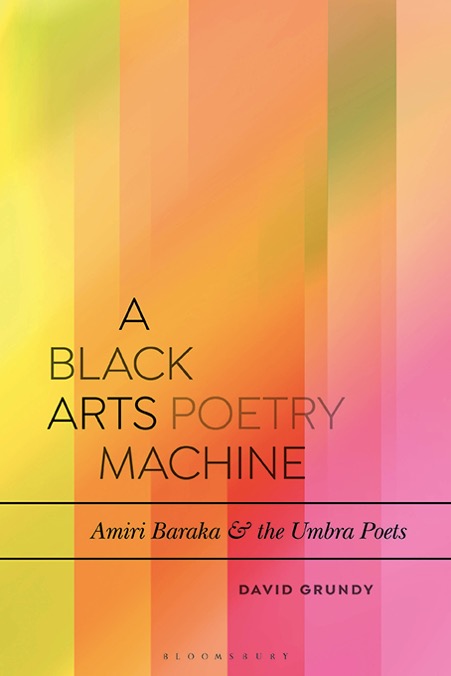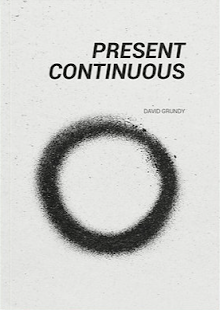The visual component of this short film consists of outtakes from
Le Navire Night: shots from a moving car of Paris streets at dawn, their emptiness in some way linked to Duras’ sparse voiceover. The text puts forth a simple supposition about the prehistoric hand prints—‘blue for the sea, black for the night sky’—left in caves in Southern France, 30,000 years ago: a single human whose ‘negative’ mark is accompanied by a plea for human connection, a screamed ‘I love you’, announced to ‘those who have names, those who have identities’—‘to anyone who will hear me screaming’. Duras has him alone—the search for human connection that characterises all her work, but is presented in particularly stripped-back form in these short-to-medium legnth films of the late ’70s and early ’80s (
Les Mains, Césareé,
Aurelia Steiner,
L'Homme Atlantique). She
told Godard that she increasingly distrusted the role of actors—first, for their role as performers, as representations of something other than themselves; second, for getting in the way of the solitary and singular relation of individual writer to text that she enjoyed (that was the condition for) her writing, but which cinema by its very form denies. Hence the five films made ‘without actors’, as she put it—the feature-length '
Son nom de Venise dans Calcutta désert’—the soundtrack to
India Song set over images free of those who voice it—and then the shorter
Les Mains, Césareé, the two
Aurelia Steiner films—in which the voiceover, too, is freed of any voice save hers. Removing these mediations—actors as spokespeople, as it were—these films are concerned with the direct—though not necessarily answered, or even heard—address from an ‘I’ to a ‘you’: lover and beloved, speaker and hearer, director and audience. As well as the mediating role of actors, Duras distrusts the illusion of liveness provided by diegetic sound. In conversation a few years later, Godard suggested that her insistence on film’s connection to text marked a return to the textuality, the necessary experience of reading, that formed a vital part of film’s meaning in the days of silent cinema: image, sound, and text, not as an integrated whole, but as separate tracks, at once more stripped-back than the narrative talkie and, in their endless juxtapositions and recombinations of those tracks, infinitely more complex. In ‘
Les Mains’, then, ambient sounds from the footage are removed; instead, Duras’ voice and the solo violin that plays through it all, in one of the loops of short musical material she favours, as if tuning up, finding its way to a melody.
The roving camera finds the Parisian streets themselves as a kind of equivalent to this mark—the traces of human existence with the humans removed. Discussing her work during the period in which this short film was made, Duras—whose literary production had temporarily dried up as her alcoholism increased, yet who was making more films than ever—said she wanted to ‘murder’ cinema. She was in search, she said, of ‘une image passe-partout’—a ‘master image’, one which can be superimposed on any text, meaningless in itself, without aesthetic value (‘neutral […] neither ugly nor beautiful’), brought to life and given meaning only by the text that ‘passes over it’. As well as master image, ‘passe-partout’ suggests the frame between picture and glass, or, alternatively, that which enables the bearer to pass anywhere. And so in ‘
Les Mains’, we have the neutral master image, the frame which enables the passage suggested by the car’s movement. Yet, while the image is clearly contrasted or enlivened by he apparently distinct voiceover, image itself is not entirely neutral. The humans we see are, in the main, the street sweepers and garbage collectors whose peripheral existence recalls the figures at the edges of roads in ‘
Le Camion’ the previous year. As in ‘
Le Camion’, where the freedom to travel, by lorry or by car, reckons with the failure of broader societal organisation and the marginalisation of the peripheries within Europe itself (known in the French left of the time as the ‘Fourth World’).
The footage—at least in the online print I saw—was too blurred to make out much more than silhouettes, the rhythmic action of brushes, vague figures tipping rubbish sacks into lorries, but Renate Gunther
suggests that they’re migrant workers: the film’s progression from night to the first traces of day, as white people start to appear, rendering the ‘negative hands’ those of the labour rendered invisible, carried out before the dawn, while at the same time resisting the binary thinking that would reinforce precisely that racialised division, that classed division that maps onto the spaces of night and day as labouring spaces. In ‘
Aurelia Steiner’, the flow of the river suggested to Duras, not an image of continual flow, of nature, of beauty, but of political disappearance—the Algerian protestors thrown into the Seine in 1961, the spaces of war during the period of occupation, with their attendant anti-semitism, collaboration, complicity. These images cannot be neutral in the political sense that would imply. Duras’ voiceover here also serves to displace the mendacious lies by which ‘European’ identity—continental being—is tied to an increasingly exclusionary ideology, one which encourages migration for cheap and disposable labour while closing its borders and blaming those from its peripheries for its ill. So it is that Duras presents the lone prehistoric man in context of what she calls ‘the endless forests of Europe’. Europe itself is here estranged from its mendacious myths of dwelling, belonging (for some, not others). The prehistoric man is not the primordial Aryan ancestor but an outcast: civilisation, the permanence and question for socialisation implied by mark-making, is not the first step towards exclusion, conquest, division, exploitation, but the search for connection that continue in spite of those practices. As such, the film comes down to an expression of Duras’ theory of art—and of civilisation itself: the search for human connection and a sublimated scream for love that inheres in any mark-making, any mode of address. The first-person, that fusion of prehistoric man and Duras herself, addresses ‘you who are named / who have an identity’—that is, those with the ‘passe-partout’ which enables them safe passage, I.D. card, passport, badge of class or gender or skin. And so too the speaker identifies themselves, by implication, with those who wander, those undocumented, those sweeping the streets, those performing their invisible labour at night, those inserted silently behind the principal image in the frame. Duras, for whom writing itself was, as she would later put it, like a ‘silent scream’,
announces:
I am someone who calls,
I am someone who called, who screamed, thirty thousand years ago: “I love you”.
I scream that I want to love you. I love you.
I will love anyone who will hear me scream.
Throughout the film, such utterances shift between tenses—the present and future tenses that occupy most of the film’s delcarations of love, and the final past tense with which the film ends (‘I am the one who screamed he loved you’). In these shifts, and in the stitching together of fragments of film, fragments that chart a general crepuscular progression, the movement from night to dawn,but in ways that are hesitant, vague, imprecise,
'Les Mains' suspends time. It plays out across the distance, impossible to imagine, between the moment of mark-making 30,000 years ago; the repeated rituals of dawn in the modern city; the malleable distances of desire and fulfilment, address and reply. It poses a question, puts forth an address, an imposition, a scream, that it dares its audience to answer in ways that are, perhaps, unanswerable.
 When the COVID-19 pandemic and attendant lockdown measures reached the UK back in March, I somehow got the idea into my head that I'd watch one hundred films and give each one a short (one paragraph) write-up, generally focusing on a particular representative image or scene from the film. One hundred seemed both sufficiently large and sufficiently arbitrary a figure, a structure for meandering viewing, a way to focus attention, with the process as something that both mirrored and staved off the thought that this situation wouldn't end any time soon. Now that we've come to the other end of the year, one hundred films have been written up. I've been posting them periodically on a dedicated Tumblr site, but have now added them as a page to this site--you can see them by clicking the link on the sidebar, though they look more elegant on Tumblr.
When the COVID-19 pandemic and attendant lockdown measures reached the UK back in March, I somehow got the idea into my head that I'd watch one hundred films and give each one a short (one paragraph) write-up, generally focusing on a particular representative image or scene from the film. One hundred seemed both sufficiently large and sufficiently arbitrary a figure, a structure for meandering viewing, a way to focus attention, with the process as something that both mirrored and staved off the thought that this situation wouldn't end any time soon. Now that we've come to the other end of the year, one hundred films have been written up. I've been posting them periodically on a dedicated Tumblr site, but have now added them as a page to this site--you can see them by clicking the link on the sidebar, though they look more elegant on Tumblr. 
































